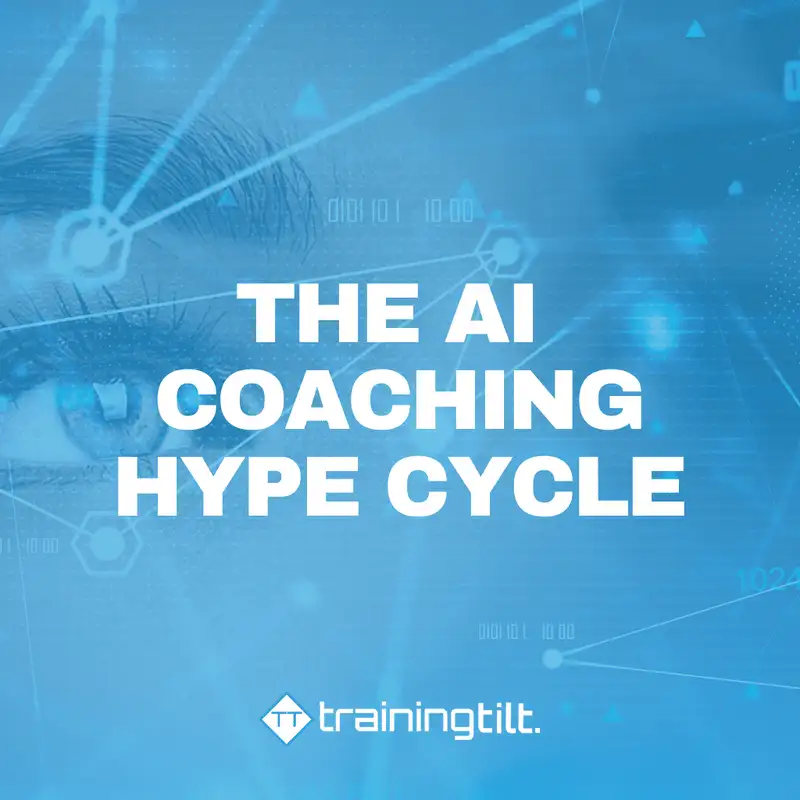The AI Coaching Hype Cycle
AI doesn't do a good job of coaching, ignore what the direct-to-athlete platforms tell you about it. They are talking their own book. They won’t replace good coaches any time soon, if ever. Right now, they are just a much better version of a generic training plan.
All tech goes through a hype cycle, AI is no different and the AI hype cycle is probably going to be the most extreme tech hype cycle we’ve ever had.
I’ve already seen signs of athletes who were initially very excited, begin to lose interest.
- Boring repetitive workouts
- Workouts that are consistently too hard or too easy
- Random workouts showing up in their calendar
The funny thing is, this can just as easily happen when you have a coach, but you can have a conversation with your coach and resolve these pretty quickly and move forward.
A coach can explain to the athlete that sometimes workouts should be repetative to get the best results, and above all else, the human connection with a coach makes boring repetitive training a lot more fun, to the point where athletes might not even notice that it’s boring. That’s what humans can do for each other.
Let’s dig in a bit more to how I think things will play out. I’ll use the typical tech ”Hype Cycle” framework to make a bit of a prediction. The stages are the “Innovation Trigger”, “Peak of Inflated Expectations”, my favorite, the “Trough of Disillusionment”, the “Slope of Enlightenment”, and finally we settle on the “Plateau of Productivity”
Innovation Trigger
AI-driven platforms launch, claiming to offer personalized coaching without the need for a human coach. It sounds great—tailored workouts, data analysis, and 24/7 availability. Athletes are excited to try it, especially with the promise of performance improvement, paired with cutting out the cost of a coach.
Peak of Inflated Expectations
This is where the platforms really crank up the hype. They start pushing the idea that AI can handle everything a coach does. It’s marketed as a perfect substitute, capable of customizing workouts, adjusting on the fly, and reading athletes' needs based on data alone. Athletes jump on board, expecting AI to deliver.
But the cracks start showing pretty quickly.
Trough of Disillusionment
Once athletes start using these platforms, they realize AI has some big limitations. It’s not the game-changer they were expecting.
- Repetitive workouts: AI lacks variety. After a while, the workouts get boring because they don’t adapt the way a human coach would.
- Workouts that don’t fit: Athletes start noticing that the training is either too easy or too hard, and the AI doesn’t seem to adjust well to their personal progress or life context, much of which doesn’t show up in the data.
- Random, unrelated workouts: Sometimes the AI throws in sessions that don’t make sense or aren’t aligned with the athlete’s goals, making the whole experience feel disconnected.
At this point, athletes start losing interest, realizing that AI just can’t replace the personal touch and expertise of a human coach.
Slope of Enlightenment
After the initial excitement fades, it becomes clear that AI isn’t a full-on coach replacement—it’s a tool, or more like an assistant. AI can help with some of the workload—tracking progress, organizing data, or automating simple tasks—but it still needs a coach to provide the real guidance, creativity, and adjustments that athletes need.
Athletes and coaches start seeing that AI works best when paired with a coach, not as a standalone solution.
Plateau of Productivity
Eventually, AI finds its place. It becomes a useful tool to help coaches with the day-to-day stuff, but it’s not trying to take over the relationship. The hype settles down, and AI proves to be a supportive piece of the coaching puzzle, rather than the whole thing.
This cycle has played out over and over again with all technology and likely will be very similar with AI coaching.
Conclusion
AI can assist with creating workouts and providing data insights, but it can't replace the human touch essential for coaching. To truly connect with your athletes, you have to be a coach yourself.
AI lacks intuition, empathy, and understanding. It doesn’t know what it feels like to help an athlete push past their limits or guide them through their highs and lows.
But AI makes a great assistant.
Managing training plans and athlete data can be time-consuming. Some of it is tedious, repetitive, and takes away from what you do best: coaching.
That’s why we built tools like our AI Workout Builder and Writing Assistant. They handle the busywork, from generating workouts to fixing grammar and suggesting comments based on your athletes' training data and zones. All while keeping you in control.
So you can focus on what truly matters:
Building real connections, delivering personal guidance, and empowering your athletes to succeed.
Learn more about how we are building AI tools to supercharge coaches.
https://trainingtilt.com/ai-tools-for-coaches
You can read the full blog here
https://trainingtilt.com/the-ai-coaching-hype-cycle
You can watch the video version here
https://youtu.be/ZgsSG7iSWz8
Training Tilt is an all in one coaching and e-commerce platform that helps coaches get better results for the clients and their businesses. You can learn more about Training Tilt here
https://trainingtilt.com/ai-tools-for-coaches
You can read the full blog here
https://trainingtilt.com/the-ai-coaching-hype-cycle
You can watch the video version here
https://youtu.be/ZgsSG7iSWz8
Training Tilt is an all in one coaching and e-commerce platform that helps coaches get better results for the clients and their businesses. You can learn more about Training Tilt here
Creators and Guests


